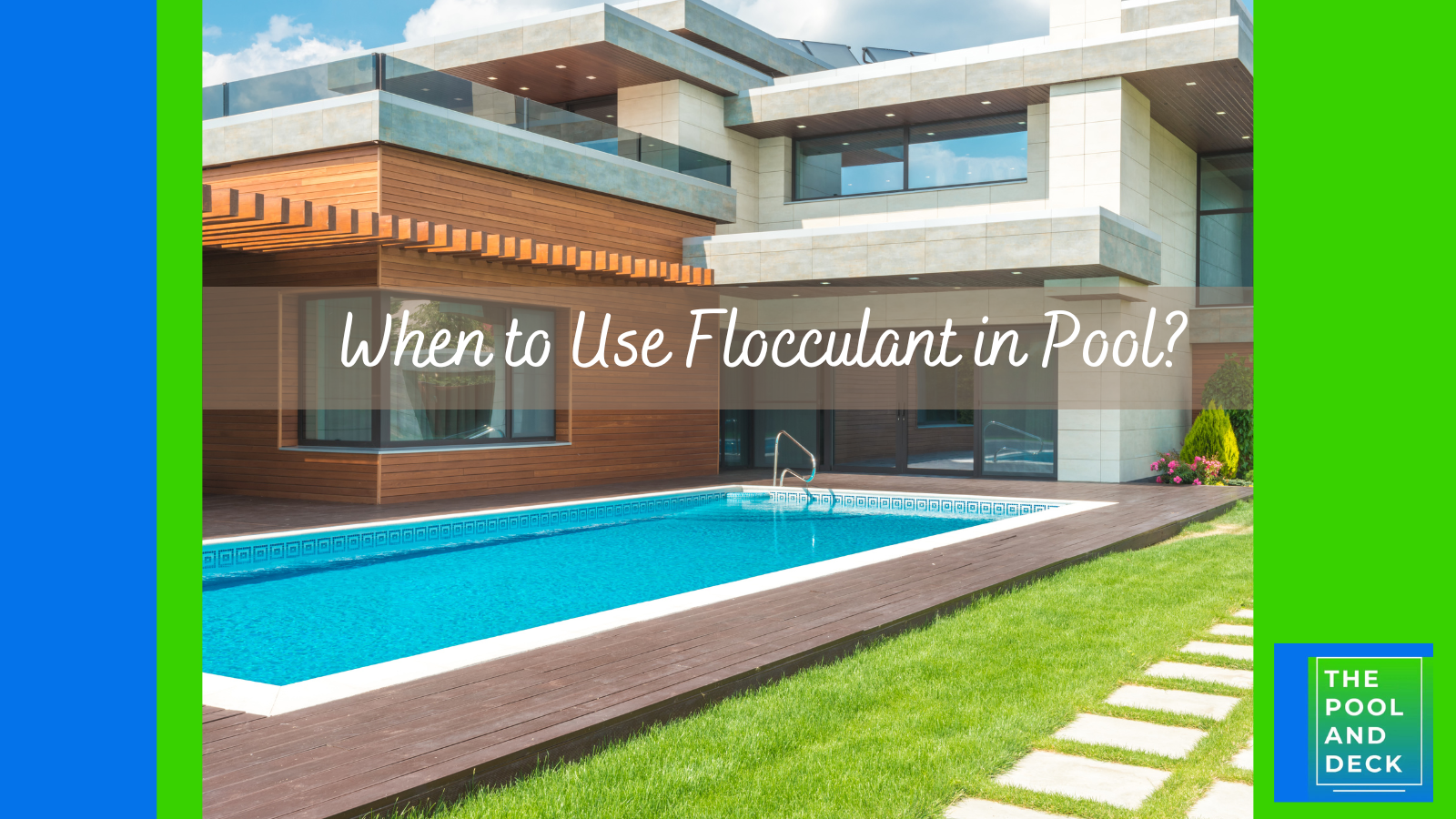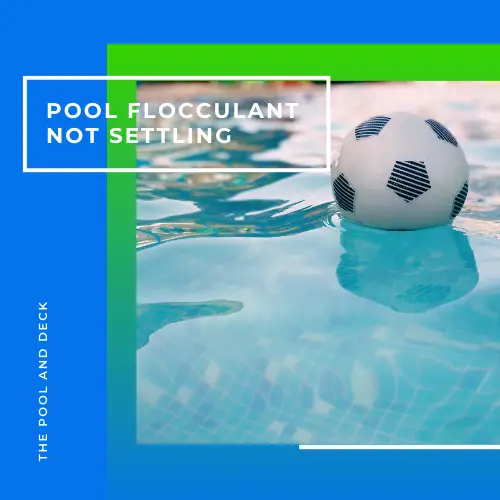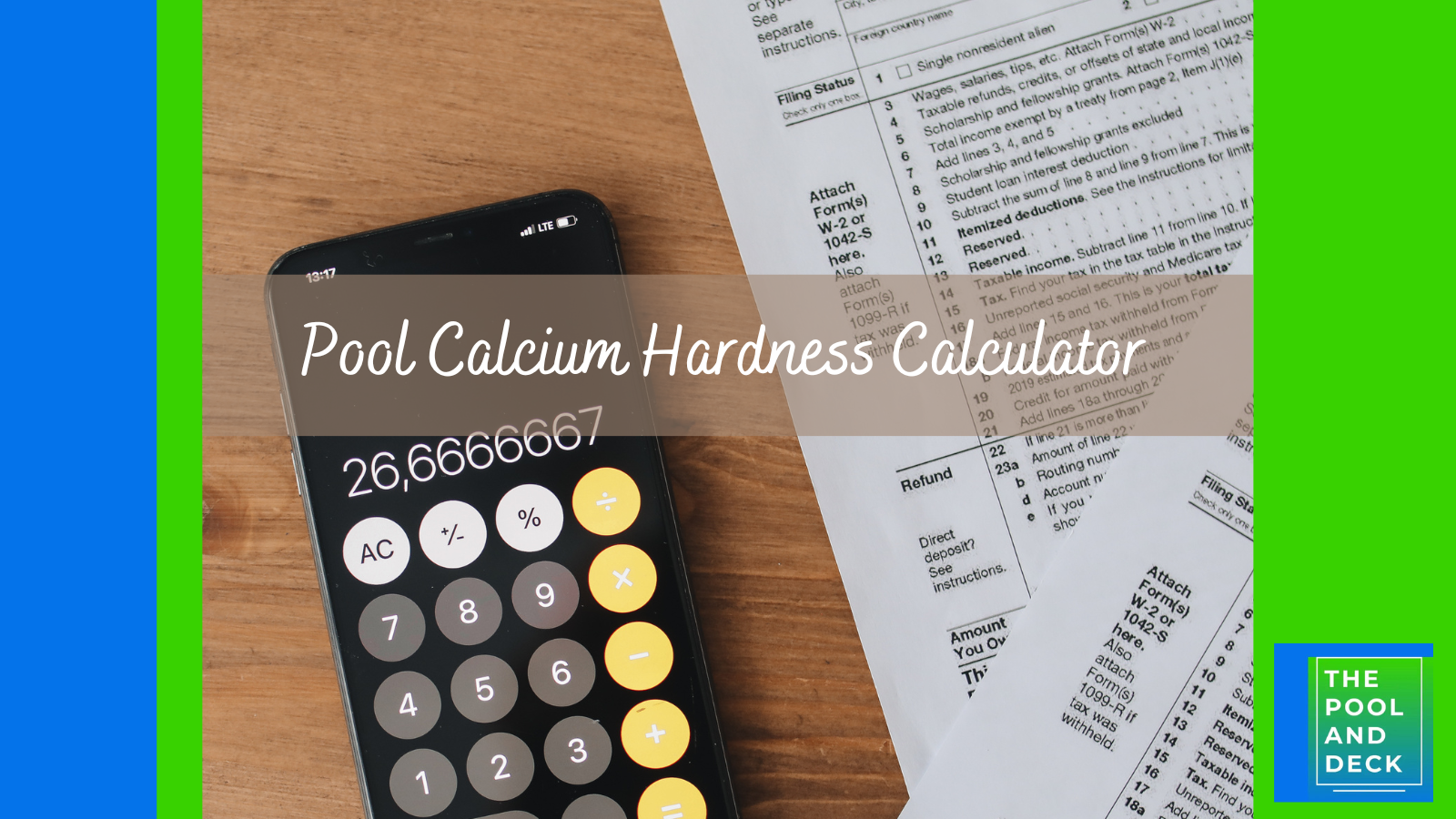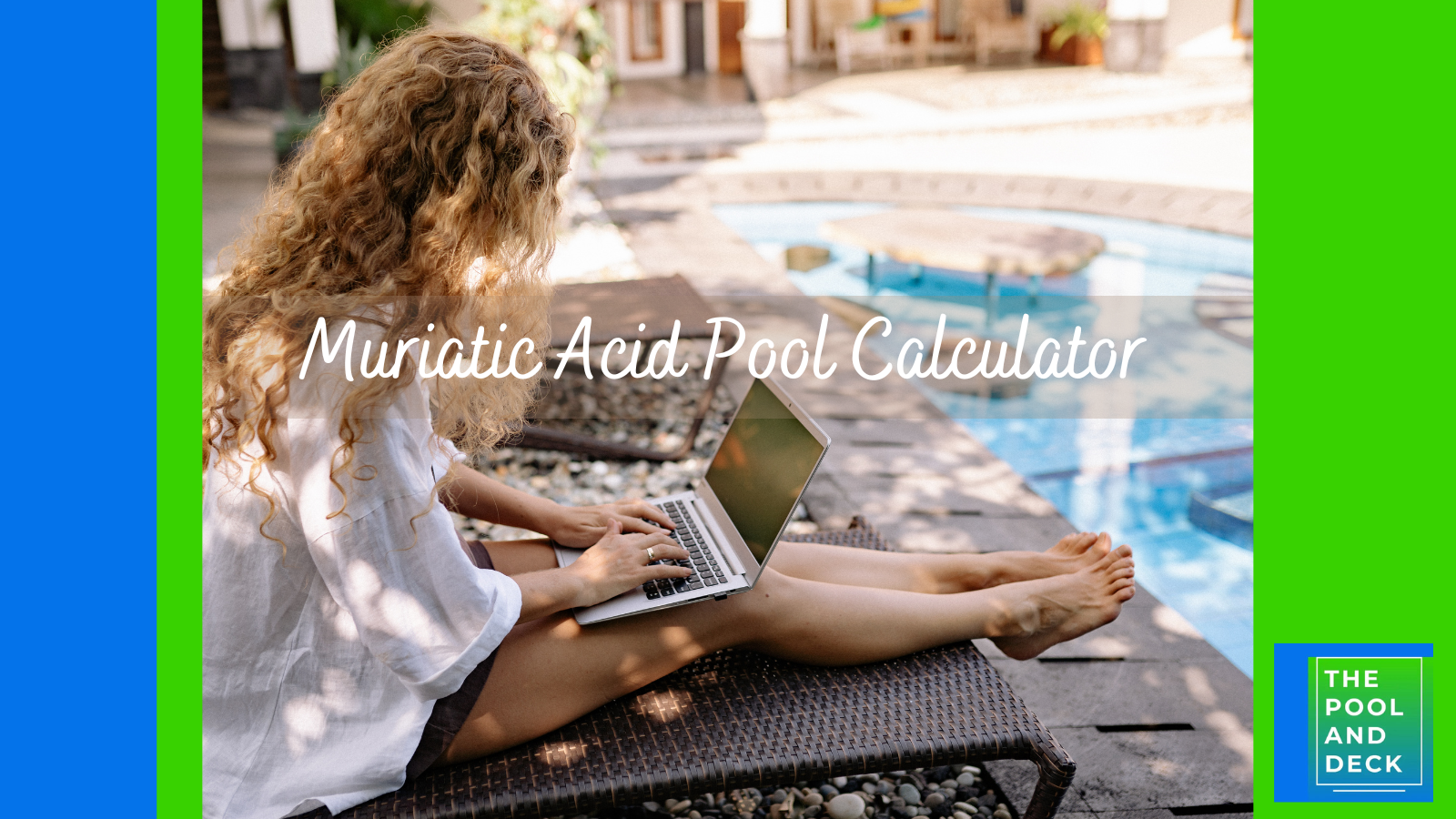Is Calcium Hypochlorite Chlorine? (Important Stuff You Need To Know!)
thepoolanddeck.com is a participant in the Amazon Services LLC Associates Program, an affiliate advertising program designed to provide a means for sites to earn advertising fees by advertising and linking to Amazon.com . The website is also an affiliate of a few other brands. The affiliate links never increase your purchase price. We do appreciate your support. Thank you very much!
Table of Contents
Is Calcium Hypochlorite the Same as Chlorine?
The quality time that you get to spend with your family & friends makes a backyard pool a worthwhile investment. To enjoy it thoroughly keep it free of germs, bacteria & algae at all times. But is Calcium Hypochlorite the same as Chlorine and the way to sanitize your pool?
Calcium Hypochlorite, (aka Cal Hypo) is not Chlorine. Rather it is a Calcium salt of Hypochlorous Acid and is sold as a white granular powder. Cal Hypo, for pool use, typically has 65% Available Chlorine (AC). Due to the high chlorine content it is used to sanitize and shock swimming pools.
The chemical formula for Calcium Hypochlorite is Ca (OCl)2 and it’s reaction with pool water is represented as
Ca(OCl)2 + 2H2O => 2CaOH + 2HOCL
The Hypochlorous Acid (HOCL) is what kills the germs, bacteria & algae.
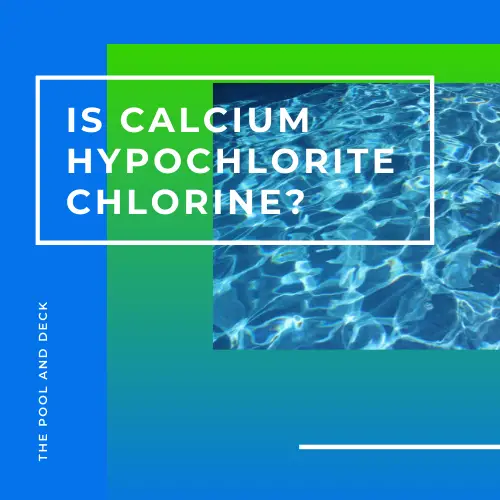
Cal Hypo as a sanitizer or shock is sold either as granular powder or a tablet. The powder can be sprinkled on the water surface or the tablet dropped into the pool. It dissolves readily and the pool water gets chlorinated quite rapidly.
Calcium Hypochlorite and Sodium Hypochlorite are unstabilized sources of Free Chlorine as opposed to Dichlor and Trichlor, which are stabilized sources of Free Chlorine.
Cal Hypo tablets are also formulated for “slow dissolve” over a week so that they can be used for regular maintenance sanitization. They can be put in the skimmer, a floater or a feeder.
Calcium Hypochlorite is great for sanitizing a pool as part of the regular pool maintenance routine, if the Cyanuric Acid (CYA) levels are high.
However, if the Cyanuric Acid (CYA) level is within 30-50 ppm, then Trichlor tablets are more suitable as they have Cyanuric Acid built into their formulation.
Safety Precaution: Never use the same floater or feeder that you ever used for Trichlor. Cal Hypo is explosive when it comes in contact with even traces of Trichlor.
Is Calcium Hypochlorite the Same as Shock?
Calcium Hypochlorite has the highest concentration of Available Chlorine making it a good choice as Pool Shock. But, it does have some disadvantages.
Under normal situations, you should maintain the Free Chlorine (FC) level in your pool water between 2-4 ppm, (3 ppm is ideal). This level is achieved by having a regular and uniform supply of chlorine to your pool. This is the “Maintenance Chlorination”.
Pool Shock, on the other hand, spikes up the Free Chlorine (FC) level from less than 4 ppm to at least 10 ppm (sometimes even to 25 ppm!). This is the “fast & furious” way of killing the pathogens & algae.
The Free Chlorine (FC) from the Pool Shock is not expected to stay in the pool for long. The high level of Free Chlorine (FC) as a result of the Shock should ideally do its job of killing the pathogens & algae, overnight.
Once the sun is up, the UV rays should burn off the remaining Free Chlorine (FC) and bring the level to 5 ppm or less. It is safe to swim and will not result in itchy skin or red eyes.
Shock should not contain, or be supplemented by, Cyanuric Acid (CYA). This is why Pool Shock should be unstabilized chlorine and Cal Hypo is unstabilized.
Cal Hypo Shock Disadvantages
Cal Hypo Shock is extremely rich in Available Chlorine (AC) but is not recommended for use in:
- Salt water pools due to the calcium content
- Painted, vinyl & fiberglass pools due to strong bleaching action
Cal Hypo Shock will also increase calcium hardness levels and may result in cloudiness, turbidity and scaling.
Check the Cyanuric Acid (CYA) Level before Shock
You must always check the Cyanuric Acid (CYA) level of your pool before shocking it. The recommended Cyanuric Acid (CYA) level for an outdoor pool is 30-50 ppm. A high Cyanuric Acid (CYA) level decreases the effectiveness of Chlorine in killing the pathogens.
In fact a Cyanuric Acid (CYA) level of 100 ppm or more is a complete no-no. You must dilute your pool to bring down the Cyanuric Acid (CYA) level within range.
Check the pH before Shock
You must check the pH level of the pool before shocking. If the pH is higher than 7.5, you will need to reduce it by adding muriatic acid.
The Hypochlorous Acid coexists with OCl- ions and the %age of each depends on the pH of the pool water. When pH of the pool water rises above 7.5, the %age of Hypochlorous Acid drops significantly. In other words the effectiveness of the shock drops if the pH of the pool water is high.
Can you Use Calcium Hypochlorite in a Swimming Pool?
Calcium Hypochlorite is often used in swimming pools, especially as a shock. “Slow Dissolving” Cal Hypo tablets can also be used for week long pool sanitization.
The advantage of using Cal Hypo Granules for shocking the pool is that it really packs a punch. The Available Chlorine in Cal Hypo is in the 65-75% range.
In spite of being in a granular powder form it dissolves and disperse very fast in the pool water.It has no Cyanuric Acid (CYA), which is an advantageous feature of a Pool Shock.
On the down side, Cal Hypo Shock increases calcium hardness and makes the pool water cloudy & turbid. Expect calcium levels to go up by 80% of the increase in chlorine levels. Cal Hypo Shock also increases the pH and alkalinity, so you need to adjust for that after the shock.
How Much Calcium Hypochlorite do I Add to My Pool?
Many manufacturers make Cal Hypo tablets, such that 1 tablet will keep the Free Chlorine (FC) level at 3 ppm for a week, for 10,000 gallons of pool water.
To determine the number of tablets you require simply divide your pool volume by 10,000.
To raise the chlorine level of a 10,000 gallon pool by 10 ppm, you need to add 1.3 pounds of Cal Hypo Shock.
To determine the quantity of Cal Hypo Shock required, you must know the
- Volume of your pool in Gallons
- Present level of Free Chlorine (FC) in ppm
- Target level of Free Chlorine (FC) in ppm
To keep your pool sanitized at all times you must maintain the Free Chlorine (FC) level in the 2-4 ppm range. Top up the Cyanuric Acid (CYA) level if it is below 30-50 ppm level. Cyanuric Acid (CYA) shields the Free Chlorine (FC) from the UV rays of the sun.
When shocking the pool the Free Chlorine (FC) level must be raised to 10 ppm or more. Quite often an initial level of 25-30 ppm is targeted.
There should be no addition of Cyanuric Acid (CYA). You actually want the sun to burn off the excess Free Chlorine (FC), as soon as possible.
How Long After Adding Cal Hypo Can You swim?
It is safe to swim in a chlorinated pool if the Free Chlorine (FC) level is below 5 ppm.
Wait for at least 4 hours before getting into the pool after adding Calcium Hypochlorite (Cal Hypo) to the pool water as part of the regular weekly sanitization routine. This is sufficient time for the chlorine to have dissipated in the pool water and neutralized the germs, bacteria & algae.
It is best to shock your pool with Cal Hypo at dusk and you do not plant to use the pool any more. The Free Chlorine (FC) level will spike up, but then no one is going to be using the pool. Moreover, the Free Chlorine (FC) will not get burned off by sunlight.
During the night the Free Chlorine (FC) will circulate and kill all the pathogens. In the morning the sunlight will burn off any excess chlorine. Free Chlorine depletes by 50% every 45 minutes when exposed to UV rays.
Under the UV rays, 10 ppm can drop to 2-3 ppm in 1 ½ hours, without a stabilizer. You will be able to swim, but do check the Free Chlorine ((FC) level before you dive in!
For more information on Pool Chlorine Types refer to my post Complete Guide To Pool Chlorine Types. (What Is The Best?).
Recommended Swimming Pool Chemicals
Best Liquid CYA Free Pool Shock
Champion Liquid Chlorine (Sodium Hypochlorite) Pool Shock (12.5%) is easy-to-use, fast, and effective. This Pool Shock does not have Cyanuric Acid (CYA-stabilizer) and will not result in build-up of scale. Order from Amazon using the link below:
Liquid Chlorine Pool Shock (Case – 4 Gallons) – 12.5% Sodium Hypochlorite
Best Cal-Hypo Pool Shock
Calcium Hypochlorite Cal-Chlor chlorine granules, from In The Swim, provide 68% available chlorine for hard-hitting immediate results! Non-stabilized formula is ideal for super shocking or everyday use as it does not contain any Cyanuric Acid (CYA). Order from Amazon using the link below:
In The Swim Calcium Hypochlorite Chlorine Granular Pool Shock
Best Dichlor Granular
Rx Clear Granular chlorine is 99.3% Sodium dichlor with added benefits of containing bactericide, algaecide, and disinfectant. It has a long shelf-life and low odor. Rx Clear is pH neutral and 100% soluble. Order from Amazon using the link below:
Rx Clear Stabilized Granular Chlorine
Best Trichlor Tablets
Rx Clear 3″ Stabilized Chlorine tablets are 99% Trichlor with added benefits of containing bactericide, algaecide, and disinfectant. It is slow dissolving with 90% available chlorine. The dosage is 1 tablet per 10,000 gallons of pool water which lasts for up to one week. Order from Amazon using the link below:
Rx Clear 3-Inch Water Soluble Chlorine Tabs
Thank you very much for reading the post. I do hope you found it informative and helpful.


